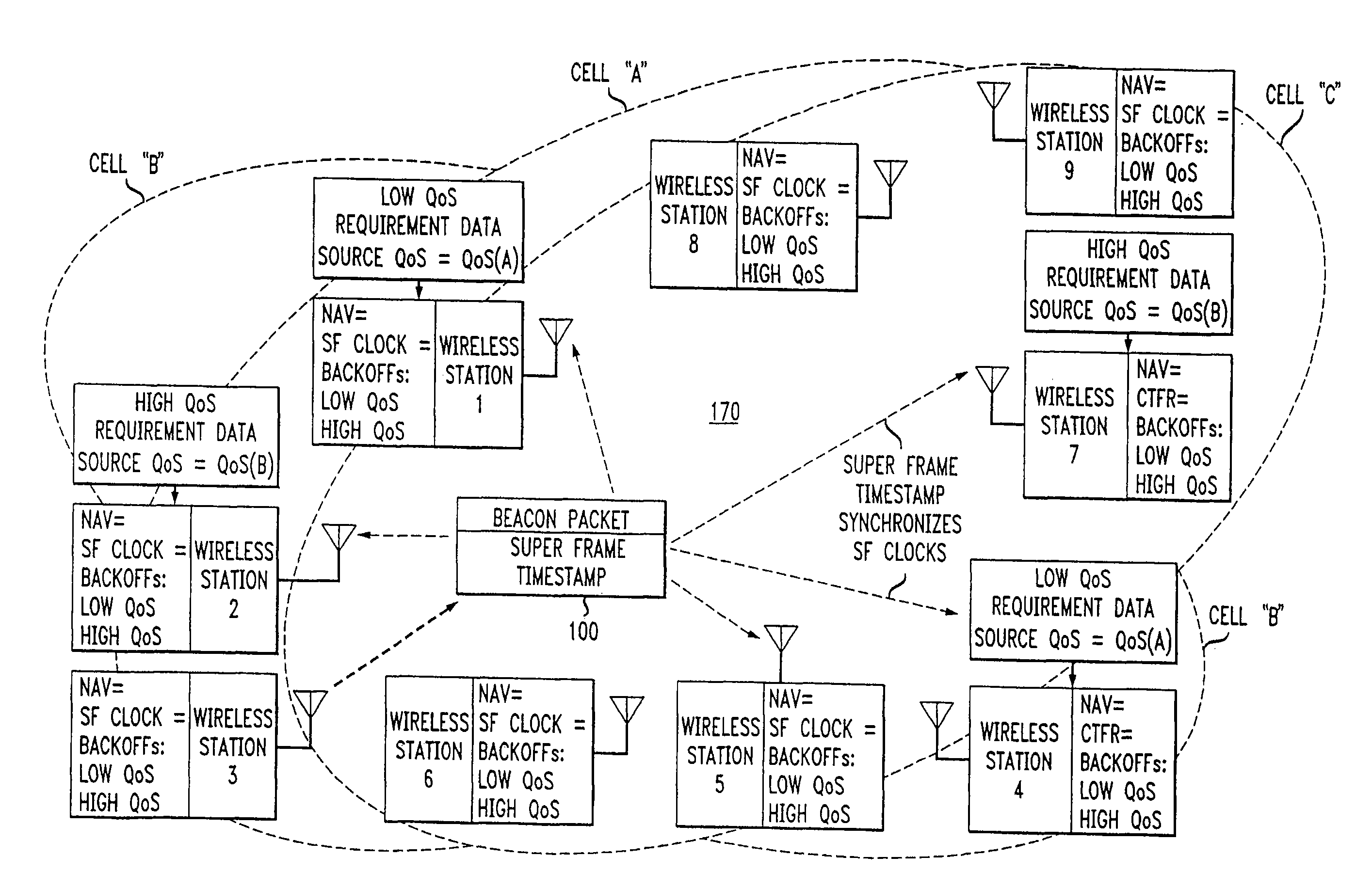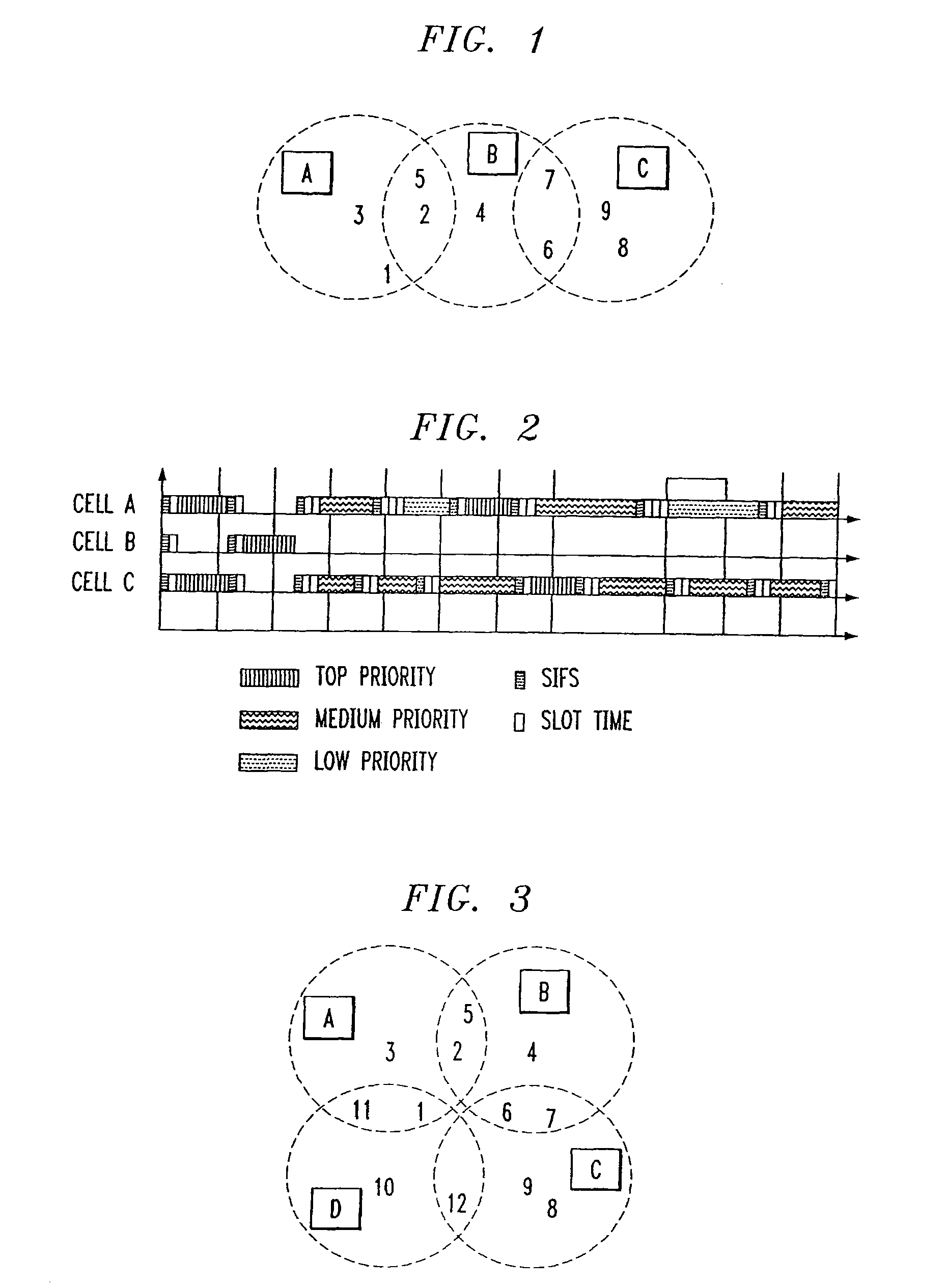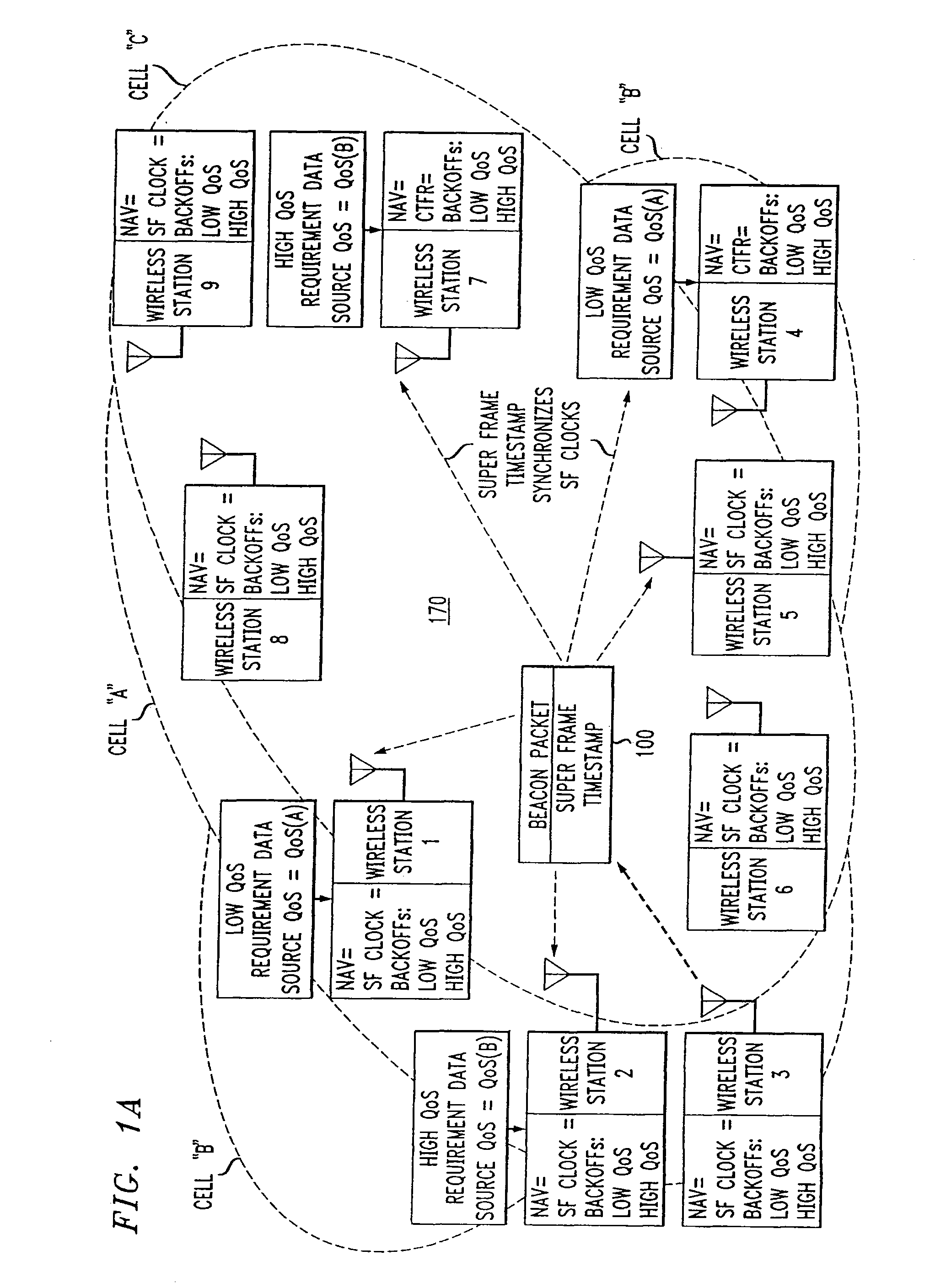Wireless lans and neighborhood capture
a wireless lan and neighborhood technology, applied in the field of communication, can solve the problems of channel re-use, voice and video applications have the most stringent delay and loss requirements, and are sensitive to errors, so as to achieve the same success rate in seizing channels and eliminate unfairness
- Summary
- Abstract
- Description
- Claims
- Application Information
AI Technical Summary
Benefits of technology
Problems solved by technology
Method used
Image
Examples
Embodiment Construction
[0065] The neighborhood capture effect can be understood by considering a multiple-cell WLAN where three cells have been assigned the same channel. The cells assigned to the same channel are referred to as a co-channel group. As illustrated in FIG. 1, the three cells A, B, and C comprise nine stations. Cells are depicted as dotted circles. The stations are labeled numerically and the cells are labeled with alphabetic characters. Stations 1, 2, and 3 make up cell A with station 3 serving as the AP for cell A. Stations 4, 5, and 6 make up cell B with station 4 as cell B's AP. Stations 7, 8, and 9 make up cell C with station 9 as the AP for cell C. Cells A and C are not within interference range of each other, so they are called a re-use group. Stations in the pair of cells A-B or B-C are, however, within possible interference range of one another. In the A-B cell pair, station 2 of cell A and station 5 of cell B are both in the possible interference range of one another. Corresponding...
PUM
 Login to View More
Login to View More Abstract
Description
Claims
Application Information
 Login to View More
Login to View More - R&D
- Intellectual Property
- Life Sciences
- Materials
- Tech Scout
- Unparalleled Data Quality
- Higher Quality Content
- 60% Fewer Hallucinations
Browse by: Latest US Patents, China's latest patents, Technical Efficacy Thesaurus, Application Domain, Technology Topic, Popular Technical Reports.
© 2025 PatSnap. All rights reserved.Legal|Privacy policy|Modern Slavery Act Transparency Statement|Sitemap|About US| Contact US: help@patsnap.com



